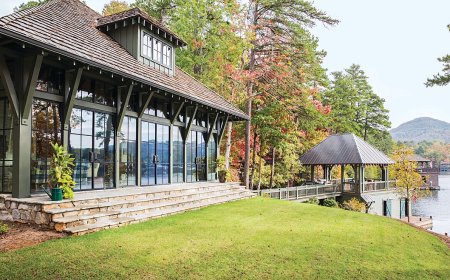How to Cycle Hautacam Col Climbs
How to Cycle Hautacam Col Climbs Cycling the Hautacam Col is not merely a physical challenge—it is a rite of passage for road cyclists seeking to test their endurance, technique, and mental resilience against one of the most iconic ascents in the Pyrenees. Located in the French department of Hautes-Pyrénées, Hautacam sits at an elevation of 2,210 meters (7,251 feet) and has become a legendary stag
How to Cycle Hautacam Col Climbs
Cycling the Hautacam Col is not merely a physical challenge—it is a rite of passage for road cyclists seeking to test their endurance, technique, and mental resilience against one of the most iconic ascents in the Pyrenees. Located in the French department of Hautes-Pyrénées, Hautacam sits at an elevation of 2,210 meters (7,251 feet) and has become a legendary stage in the Tour de France, revered for its relentless gradients, breathtaking alpine scenery, and the emotional weight it carries for riders and fans alike. Whether you're a seasoned climber preparing for your first ascent or a passionate enthusiast dreaming of conquering this legendary climb, understanding how to cycle Hautacam Col properly can transform a daunting endeavor into a deeply rewarding experience.
The climb’s reputation stems from its combination of length, sustained steepness, and altitude. At approximately 13.9 kilometers (8.6 miles) with an average gradient of 8.3%, and sections exceeding 12%, Hautacam demands more than brute strength—it requires strategic pacing, physiological awareness, and mental discipline. Unlike many other Pyrenean cols, Hautacam offers no respite in its final kilometers. The final 3 kilometers rise at over 9%, with the last 500 meters climbing at a punishing 11–12%. This makes proper preparation, equipment selection, and mental conditioning essential.
This guide is designed to equip you with the knowledge and tools to safely, efficiently, and successfully cycle Hautacam Col. We’ll walk you through every phase—from pre-climb planning to post-ascent recovery—using real-world insights, expert techniques, and proven methodologies. By the end of this guide, you will not only know how to ride Hautacam, but you will understand why each decision matters and how to adapt your approach based on conditions, fitness, and personal goals.
Step-by-Step Guide
1. Research the Route and Terrain
Before you even touch your bike, invest time in studying the route. Hautacam is typically approached from two directions: from the west via Lannemezan (13.9 km, 8.3% average) or from the east via Saint-Lary-Soulan (11.3 km, 9.2% average). The Lannemezan side is the more commonly ridden and Tour de France route. It begins at the D618 road near the village of Sainte-Marie-de-Campan and ascends through dense forest, then opens into alpine meadows near the summit.
Use mapping tools like Komoot, Strava, or Google Earth to visualize the gradient profile. Pay attention to the steepest sections—particularly between kilometers 9 and 12—and note any sharp bends or narrow stretches where passing may be difficult. Download offline maps and save the route to your GPS device or smartphone. The final kilometer is particularly exposed, with no shelter from wind or sudden weather changes.
2. Choose the Right Bike and Gear
While a standard road bike can complete Hautacam, the climb’s sustained gradients demand a compact or sub-compact crankset paired with a wide-range cassette. A 50/34 chainring with a 11-34 or 11-36 cassette is ideal for most riders. If you’re carrying additional gear or are new to climbing, consider a 48/31 or 46/30 setup with a 11-40 cassette for easier gearing.
Ensure your drivetrain is clean and well-lubricated. A gritty chain or misaligned derailleur can cost precious energy on a climb where every watt counts. Check tire pressure—between 80–90 psi for 25mm tires, slightly lower if you’re riding on rougher pavement. Wider tires (28mm or 30mm) offer better comfort and traction on the descent, which can be slick with gravel or loose stone.
Lightweight wheels can help, but prioritize durability over marginal weight savings. A deep-section wheel may be unstable in the strong crosswinds common on Hautacam’s upper slopes. Stick to 30–40mm depth rims for balanced performance.
3. Plan Your Timing and Weather Conditions
Weather on Hautacam can change rapidly. Even in midsummer, temperatures at the summit can drop below 10°C (50°F), and sudden rain or fog can reduce visibility to near zero. Check the forecast for Sainte-Marie-de-Campan and Lannemezan, not just the nearest city. Wind is a major factor—headwinds on the upper section can double perceived effort.
Start your climb early. Most professional riders begin their ascent before 8 a.m. to avoid heat, traffic, and the midday sun that can make the asphalt dangerously hot. Starting early also gives you time to acclimatize to altitude and recover before descending. Avoid weekends in July and August when tourist traffic peaks and the road may be congested with rental bikes and sightseers.
4. Fuel and Hydration Strategy
Hydration and nutrition are critical on Hautacam. Even if you’re an experienced rider, altitude reduces your body’s ability to retain fluids and process carbohydrates efficiently. Plan to consume 500–750 ml of fluid per hour, including electrolytes. Use a hydration pack or two water bottles mounted on your frame.
Carry easily digestible carbs: energy gels (one every 30–45 minutes), banana slices, or energy bars. Avoid heavy or fatty foods. Many riders find that consuming 30–60 grams of carbohydrates per hour helps maintain power output. Practice your nutrition plan on similar climbs beforehand. Never try new gels or supplements on race day—or on Hautacam.
Don’t wait until you’re thirsty or bonking to eat. Start fueling within the first 20 minutes of the climb. Set a timer on your watch to remind you every 15 minutes to sip or bite.
5. Pacing Strategy
Pacing is the single most important factor in successfully climbing Hautacam. Too fast at the start, and you’ll burn out before the summit. Too slow, and you’ll lose momentum on the steepest sections.
Use heart rate or power data if available. For most amateur riders, aim to maintain 70–80% of your functional threshold power (FTP) or 75–85% of your maximum heart rate. If you don’t have metrics, use perceived exertion: you should be able to speak in short phrases but not sing or hold a full conversation.
Break the climb into segments:
- Kilometers 0–4: Moderate pace. Stay seated, keep cadence around 70–80 RPM. Avoid surging.
- Kilometers 5–8: Increase effort slightly. Begin shifting to easier gears before gradients steepen. Stay seated as much as possible.
- Kilometers 9–12: This is the critical zone. Gradients hit 9–12%. If you’re feeling strong, stand briefly on short ramps to relieve pressure on your glutes. But return to sitting quickly—standing for long periods is inefficient on sustained climbs.
- Last 500 meters: Mental battle. Focus on short goals: “Just reach that bend,” then “Just that tree.” Use positive self-talk. Your legs will feel heavy, but your mind must carry you.
Never try to “push through” pain. If you feel dizziness, nausea, or sharp chest pain, stop immediately. Altitude sickness is real—even at 2,200 meters.
6. Positioning and Technique
On steep climbs, your body position affects efficiency and comfort. Stay centered over the bottom bracket. Avoid leaning too far forward, which strains your lower back. Keep your elbows slightly bent and hands relaxed on the hoods or drops for better control.
Use your core to stabilize your upper body. A strong core reduces upper-body rocking, which wastes energy. Practice seated climbing drills on rolling terrain to build stability.
When standing, do so only for short bursts—never on gradients over 10% for more than 10–15 seconds. Standing shifts your center of gravity backward, making it harder to maintain traction and increasing drag. Use standing to relieve muscle fatigue, not to generate more power.
Look ahead, not down. Fix your gaze 10–15 meters in front of you. This improves balance and reduces anxiety. Focusing on the road immediately beneath your front wheel increases perceived steepness and mental fatigue.
7. Descending Safely
The descent from Hautacam is as dangerous as the ascent. The road is narrow, winding, and often littered with loose gravel, especially after rain. Speed builds quickly, and brake fade is common.
Use both brakes evenly. Avoid locking the rear wheel on sharp turns. Feather the brakes—apply pressure in short bursts rather than holding them down. Shift to a lower gear before descending to control speed without overusing brakes.
Watch for blind corners and oncoming traffic. Cyclists descending from Hautacam often travel at 50–70 km/h. Use hand signals to warn others of obstacles. Wear a helmet, gloves, and consider arm and leg protection if you’re unfamiliar with the descent.
Stop at the summit viewpoint to rest, hydrate, and cool down before descending. Don’t rush. A controlled descent prevents injury and preserves energy for the ride home.
8. Recovery and Post-Ride Care
After reaching the summit, your body is under significant stress. Altitude, prolonged effort, and temperature variation all contribute to fatigue. Within 30 minutes of finishing, consume a recovery drink with a 3:1 ratio of carbohydrates to protein (e.g., chocolate milk or a commercial recovery shake). This kickstarts muscle repair and replenishes glycogen stores.
Stretch your quads, hamstrings, calves, and lower back. Use a foam roller if available. Even 10 minutes of gentle mobility work reduces next-day soreness.
Stay hydrated for the next 24 hours. Alcohol and caffeine can dehydrate you further. Eat a balanced meal rich in complex carbs, lean protein, and healthy fats. Sleep is your best recovery tool—aim for 7–9 hours.
Best Practices
Train Specifically for Climbing
Simply riding long distances won’t prepare you for Hautacam. You need targeted climbing workouts. Incorporate hill repeats into your weekly routine. Find a climb with a similar gradient (7–9%) and duration (10–15 minutes). Perform 3–5 repetitions with full recovery between. Focus on maintaining steady power, not speed.
Include seated climbing drills: ride at 60–70 RPM for 5 minutes, then 80–90 RPM for 5 minutes. This trains neuromuscular efficiency and teaches your body to pedal smoothly under load.
Acclimatize to Altitude
Even at 2,200 meters, altitude can affect performance. If possible, arrive at least one day before your climb to let your body adjust. Sleep at elevation if you can. Avoid intense training the day before. Hydration becomes even more critical at altitude—your body loses more water through respiration.
Some riders use altitude tents or masks to simulate higher elevations, but these are not necessary for a single climb. The most effective method is time spent at elevation before the ride.
Manage Mental Fatigue
The psychological challenge of Hautacam is often greater than the physical one. The climb feels longer than it is because of its relentless nature. Use mental strategies:
- Break the climb into micro-goals: “Reach the next bend,” “Pass the next sign,” “Make it to the next tree.”
- Use music or podcasts on the approach, but turn them off during the climb to stay focused on breathing and rhythm.
- Visualize success. Picture yourself cresting the summit, arms raised, wind in your face. Repeat this image during tough moments.
- Positive self-talk: “I am strong,” “I am prepared,” “This is temporary.”
Respect the Road and Other Users
Hautacam is a public road. Cars, buses, and motorcyclists share the route. Always ride predictably. Stay to the right, signal turns, and never ride in groups of more than two abreast. Be courteous to drivers—they may be unfamiliar with cyclists on mountain roads.
Yield to emergency vehicles. If you hear sirens, pull over safely and stop. Do not assume the road is closed to traffic during races—it’s open year-round.
Carry Emergency Gear
Always ride with:
- A spare tube and pump or CO2 inflator
- Multi-tool with chain breaker
- Phone with offline maps and emergency contacts
- Lightweight rain jacket or wind shell
- Energy gel and electrolyte tablets
- First aid kit (bandages, antiseptic wipes)
Consider carrying a personal locator beacon (PLB) if riding solo in remote areas. Cell service is spotty on Hautacam.
Tools and Resources
Mapping and Tracking Apps
Use these apps to plan, track, and analyze your climb:
- Komoot: Offers detailed elevation profiles, user reviews, and route suggestions. Download the Hautacam route for offline use.
- Strava: Compare your time to others. The “Hautacam” segment is one of the most popular in France. Study the KOM/QOM leaders’ pacing.
- Google Earth: Use the 3D terrain view to visualize the climb from start to finish. Helps with mental preparation.
- Wahoo SYSTM or TrainerRoad: If training indoors, use virtual climbs that simulate Hautacam’s gradient profile.
Performance Monitoring Devices
While not essential, these tools enhance your understanding of your climbing ability:
- Power meter: The best tool for pacing. Maintaining consistent wattage prevents burnout.
- Heart rate monitor: Useful if you don’t have a power meter. Helps track exertion relative to fitness level.
- GPS cycling computer: Garmin Edge or Wahoo Elemnt provides real-time gradient, elevation, and cadence data.
Training Plans and Coaches
Structured training makes a difference. Consider these resources:
- TrainingPeaks: Access pre-built climbing plans designed for mountain passes.
- ProCyclingStats: Analyze professional riders’ data from past Tour de France stages on Hautacam.
- Local cycling clubs: Join a group that trains in the Pyrenees or similar terrain. Riding with others builds confidence and technique.
Books and Documentaries
Deepen your understanding with these resources:
- “The Tour de France: The Complete History of the World’s Greatest Bike Race” by David Walsh – Context on Hautacam’s role in cycling history.
- “Rise and Fall of the Great Teams” by Bill and Carol McGann – Insights into climbing strategies used by champions.
- Documentary: “Hautacam: The Ascent” (YouTube, 2021) – A short film following amateur riders tackling the climb, featuring expert commentary.
Real Examples
Example 1: Amateur Cyclist’s First Ascent
Julien, a 38-year-old accountant from Lyon, had never climbed above 1,500 meters before attempting Hautacam. He trained for 16 weeks using a structured plan: three weekly rides, including two hill repeats on a 10% gradient climb near his home. He practiced nutrition on long rides, consuming one gel every 45 minutes.
On the day of his climb, he started at 6:30 a.m. in cool, clear weather. He maintained 180 watts (75% of his FTP) throughout. At kilometer 10, he felt his legs tighten but kept his cadence steady. He stood only twice—once to stretch his hips, once to pass a slower rider. He reached the summit in 58 minutes, 7 minutes slower than the average Tour de France time, but proud of his accomplishment.
“I didn’t think I could do it,” he said afterward. “But breaking it into pieces made it possible. I focused on the next bend, not the top.”
Example 2: Professional Rider’s Strategy
In the 2022 Tour de France, Tadej Pogačar attacked on Hautacam during Stage 14. His team had studied the climb for months. They used data from previous ascents to determine the optimal moment to surge—just after the 11-kilometer mark, where the gradient peaks and the road narrows.
Pogačar used a 34-tooth chainring with a 32-tooth rear cog, allowing him to maintain 110 RPM even on the steepest 12% sections. He consumed two gels in the final 5 kilometers and stayed seated for 95% of the climb. His attack broke the peloton, and he gained over a minute on rivals.
His team’s success wasn’t luck—it was precision. Every gear choice, hydration sip, and pedal stroke was calculated.
Example 3: Group Ride Gone Wrong
A group of four friends attempted Hautacam on a July weekend. They started at noon, wore short sleeves, and brought only one water bottle between them. By kilometer 7, two riders were dizzy and cramping. One rider ran out of energy and had to be picked up by a support vehicle.
The group didn’t check the weather. A sudden thunderstorm hit near the summit, turning the road slick. Two riders skidded on gravel and suffered minor scrapes. They descended in panic, with no control over speed.
“We thought we were ready,” one rider admitted. “But we didn’t respect the mountain.”
This example underscores the importance of preparation—not just physical, but logistical and environmental.
FAQs
How long does it take to cycle Hautacam Col?
Time varies by fitness level. Elite riders complete it in 35–40 minutes. Strong amateurs take 50–65 minutes. Recreational riders may need 70–90 minutes. The average time is around 60 minutes.
Is Hautacam harder than Alpe d’Huez?
Yes, in terms of sustained difficulty. Alpe d’Huez is longer (13.8 km) but has a lower average gradient (7.9%) and more switchbacks, offering brief recovery moments. Hautacam’s gradients are more consistent, with no flat sections and a brutal final kilometer. Many riders find Hautacam mentally more taxing.
Do I need a special bike to climb Hautacam?
No, but a bike with low gearing is essential. A standard road bike with a 50/34 chainring and 11-34 cassette is sufficient. If you struggle on hills, consider a gravel bike with wider tires and even lower gears (e.g., 46/30 with 11-42).
Can I ride Hautacam in winter?
Technically yes, but it’s not recommended. Snow, ice, and closed sections are common from November to April. The road is often closed to vehicles, and maintenance is minimal. Only experienced winter cyclists with studded tires and proper cold-weather gear should attempt it.
Is Hautacam open to the public?
Yes, it’s a public road. However, during the Tour de France, the road is closed to traffic on race day. Outside of race events, it’s open from sunrise to sunset. Always check local traffic advisories before riding.
What’s the best time of year to climb Hautacam?
June and early September offer the best conditions: mild temperatures, clear skies, and minimal tourist traffic. July and August are popular but hotter and busier. May and October can be rainy or chilly.
Do I need to book anything to ride Hautacam?
No. There are no permits or fees. However, if you plan to stay overnight, book accommodations in Sainte-Marie-de-Campan or Lannemezan in advance, especially during Tour de France season.
How do I get to Hautacam?
The most common access point is from Lannemezan via the D618. From Toulouse, it’s a 1.5-hour drive. From Tarbes, it’s about 45 minutes. Public transport is limited; most riders drive or cycle in from nearby towns.
Can I ride Hautacam with a e-bike?
Yes, but be aware that e-bikes are not allowed during official Tour de France stages. On public roads, they’re permitted. However, many traditional cyclists prefer to keep the climb as a human-powered challenge. Respect local norms and yield to non-assisted riders.
What should I do if I feel sick at altitude?
Stop immediately. Sit down, hydrate, and rest. Symptoms include headache, nausea, dizziness, and shortness of breath. If symptoms persist for more than 30 minutes, descend. Do not push through altitude sickness. It can become life-threatening.
Conclusion
Cycling Hautacam Col is more than a test of fitness—it is a journey into the heart of what makes cycling profound. It demands respect, preparation, and humility. The climb does not reward arrogance or haste. It rewards patience, discipline, and a deep connection to your body and the landscape around you.
Whether you’re chasing a personal best, honoring the legacy of Tour de France legends, or simply seeking to stand atop a mountain you once thought unreachable, the ascent of Hautacam will change you. The wind at the summit doesn’t just cool your skin—it clears your mind. The silence after your last pedal stroke isn’t empty; it’s full of accomplishment.
Use this guide not as a checklist, but as a compass. Adapt its principles to your body, your goals, and your conditions. Train with purpose. Fuel with care. Ride with awareness. And above all, ride with joy.
The road to Hautacam is long, but every pedal stroke brings you closer—not just to the summit, but to a deeper understanding of what you’re capable of. When you finally crest that final rise, you won’t just see the Pyrenees below you. You’ll see the version of yourself that dared to try.





































